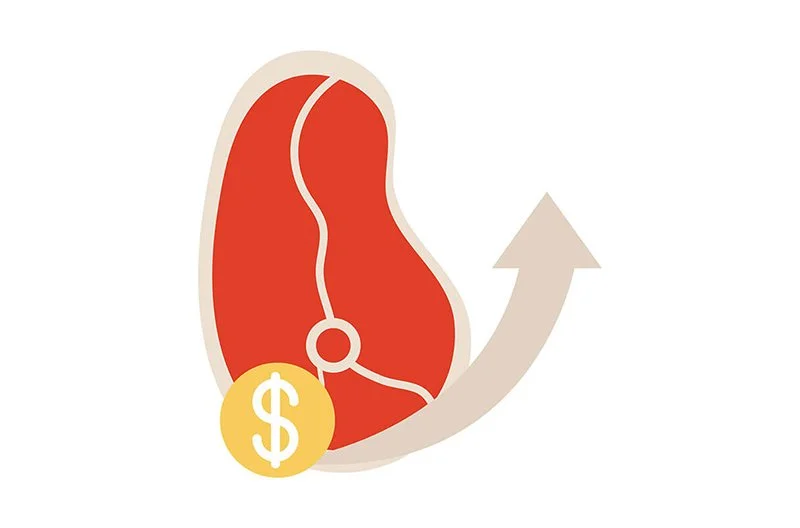Rising Meat Prices Push Dollars Far Above Record 2020 Levels
In September, at-home meal preparation remained far above the July low. Nearly 80 percent of total meals were prepared at home, according to the IRI primary shopper survey. Subsequently, some food dollars that had returned to foodservice moved back to retail.
At the same time, the survey found that more people returned to buying groceries online. During the height of the pandemic, as many as 20 percent of trips were online. This dropped to a low of 11 percent in July. In August, the online share of trips increased to 13 percent and in September the share reached 14 percent. An opportunity gap remains for fresh meat when comparing how often center-store and frozen items land in online baskets versus perishables. Produce is leading the way for fresh items, representing 12 out of the top 15 fresh items in household penetration when regarding online baskets within IRI’s household panel. Meat is represented by ground beef and bacon, providing ample room to improve and secure the same share in online and offline baskets across proteins, cuts and brands.
Between the changes in consumer consumption and buying patterns, high inflation and severe supply chain disruption and constraints, meat retailing remains in flux. IRI and 210 Analytics analyzed the retail meat department performance in the first nine months of the year along with a September performance deep dive. The report is made possible by Marriner Marketing.
Inflation
Meat prices, along with food inflation across the store, remained a big topic of discussion in September as prices increased further. The IRI-measured retail price, paid by the shopper, shows continual inflation in the tune of 6% over and above their elevated 2020 levels for total food and beverages in September. Meat prices (dollars divided by volume average at retail) had above-average gains in September amid widespread supply tightness. Across species and cuts, prices were 11 percent higher in September 2021 compared with September 2020.
The USDA Economic Research Service (ERS) reported last week that Americans spent 7.8 percent less on food in 2020 than the year before as a result of eating more meals at home versus eating out. With food-away-from-home inflation growing even faster than retail inflation, shoppers are continually reminded that home-cooked meals are both less expensive and often healthier. These are important messages for the industry to underscore amid inflation along with subdued promotional activity.


